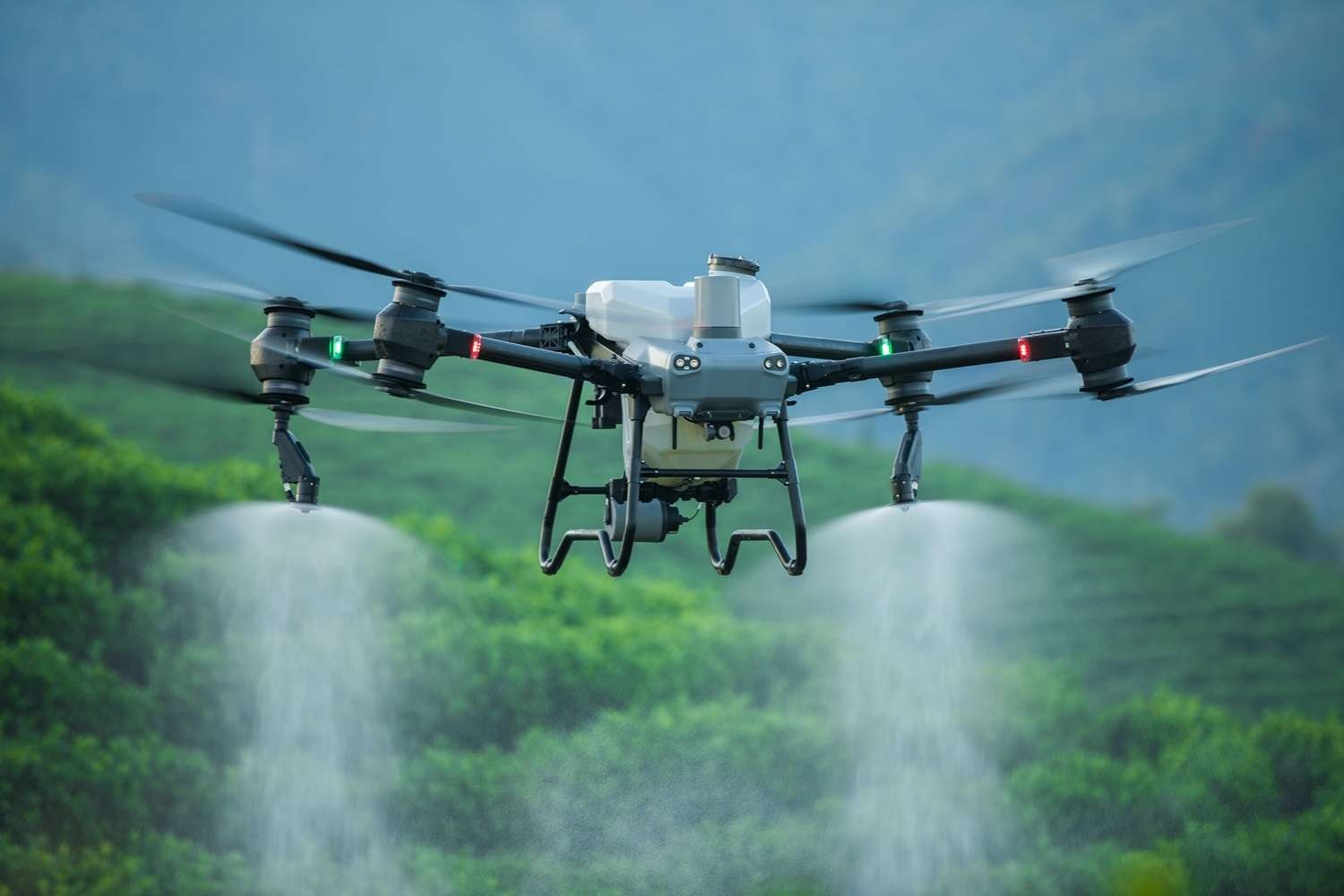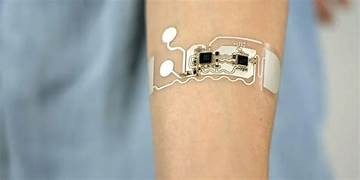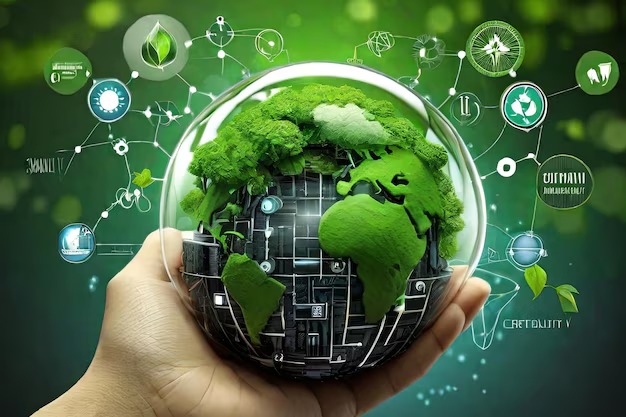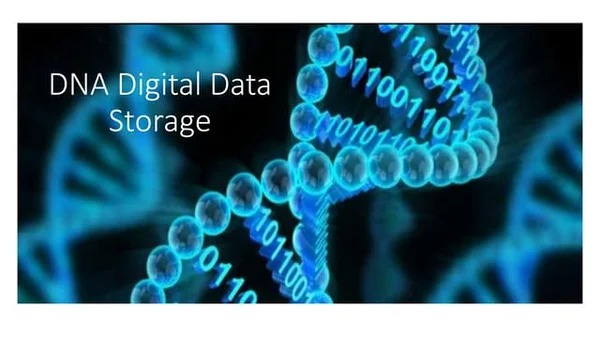
Autonomous drones in agriculture / logistics: aerial spraying, deliveries in remote areas.
Autonomous drones are revolutionizing agriculture and logistics by enabling precision aerial spraying, crop monitoring, and rapid deliveries to remote or disaster-hit areas. By integrating AI, GPS, and advanced sensors, these drones improve efficiency, reduce human labor, minimize environmental impact, and expand accessibility, while presenting new challenges in regulation, safety, and ethical deployment that must be carefully managed.
✨ Raghav Jain

Introduction: The Rise of Autonomous Drones
In the past decade, drones have evolved from niche gadgets into powerful tools driving transformation across various industries. With advances in artificial intelligence (AI), computer vision, GPS navigation, and sensor technologies, autonomous drones — capable of operating with minimal human intervention — are taking center stage. Particularly in agriculture and logistics, their role has become both indispensable and revolutionary.
In agriculture, drones are revolutionizing how farmers manage crops, monitor field health, and perform precision spraying. In logistics, they are bridging the gap between cities and remote rural or disaster-hit regions, ensuring faster and more sustainable deliveries. These innovations are redefining traditional workflows and introducing efficiency levels once thought impossible.
Autonomous Drones in Agriculture: Aerial Spraying and Smart Farming
Agriculture has always been labor-intensive, time-sensitive, and highly dependent on environmental conditions. Farmers constantly face challenges like unpredictable weather, pest infestations, and limited resources. Autonomous drones are emerging as a solution that merges precision, speed, and data-driven intelligence.
1. Aerial Spraying: Precision Meets Efficiency
Traditional crop spraying often involves ground-based machinery or manual labor, both of which can be inefficient, time-consuming, and environmentally hazardous. Drones, equipped with high-accuracy GPS and automated flight control, can spray pesticides, herbicides, and fertilizers with pinpoint precision.
Each drone can cover large fields in significantly less time, ensuring even distribution and reducing waste. For instance, DJI’s Agras series, a leader in agricultural drones, uses radar and multispectral imaging to detect crop density and adjust the spray volume accordingly. This reduces chemical use by up to 30% and boosts yield quality.
2. Crop Monitoring and Data Analytics
Beyond spraying, autonomous drones play a crucial role in crop health monitoring. Using thermal cameras, hyperspectral sensors, and AI analytics, drones can assess soil health, detect irrigation issues, identify pest outbreaks, and monitor plant growth stages.
By creating NDVI (Normalized Difference Vegetation Index) maps, farmers can visualize the vitality of crops in real time and make informed decisions. This data-centric approach helps optimize resource allocation and reduce crop losses, ensuring sustainability and profitability.
3. Automation and AI Integration
AI-driven automation allows these drones to operate without constant supervision. Once programmed with parameters like field boundaries and spray zones, they can execute tasks autonomously and even return to their charging stations.
Machine learning algorithms enhance their navigation by recognizing obstacles such as trees, power lines, or uneven terrain, thus ensuring safety and precision. Some advanced systems even coordinate drone fleets, allowing multiple drones to collaborate for large-scale spraying in sync.
4. Sustainability and Environmental Benefits
By minimizing overuse of chemicals and reducing the need for heavy machinery, drones significantly lower carbon emissions and soil compaction. Moreover, targeted spraying reduces runoff pollution into nearby water bodies — a persistent problem with traditional methods.
In regions struggling with labor shortages, drones also alleviate human dependency, enabling more consistent and efficient agricultural practices.
Autonomous Drones in Logistics: Redefining Deliveries in Remote Areas
While agriculture benefits from efficiency, the logistics sector finds its value in accessibility and speed. Autonomous drones have opened up a new frontier for last-mile delivery, especially in remote or inaccessible regions where traditional vehicles cannot reach efficiently.
1. The Rise of Drone Deliveries
Companies like Amazon Prime Air, Zipline, and Wing (by Alphabet) have demonstrated the viability of autonomous drone deliveries. These drones use pre-programmed flight paths and advanced obstacle detection to transport packages safely and accurately.
For instance, Zipline, operating in Rwanda and Ghana, has been a game-changer in medical logistics. It delivers blood, vaccines, and emergency medicines to rural hospitals — often within minutes — saving countless lives.
2. Delivering to Remote and Disaster-Affected Areas
Drones can fly over challenging terrains such as mountains, rivers, or areas destroyed by natural disasters where roads may be blocked. They become crucial during emergencies, delivering essential goods like food, water, and medical supplies when conventional means fail.
During the COVID-19 pandemic, autonomous drones were deployed in several countries to deliver test kits and medicines, demonstrating their value in crisis response.
3. Autonomous Systems and Navigation
Modern delivery drones are integrated with AI-powered autopilot systems that use GPS, LiDAR, and computer vision for navigation. These systems help drones detect and avoid obstacles in real-time, ensuring safe travel even in complex environments.
They are also equipped with geo-fencing capabilities, ensuring they operate strictly within approved airspace. The latest models can coordinate multiple deliveries in a single flight, improving operational efficiency.
4. Economic and Environmental Advantages
Autonomous drones significantly reduce fuel consumption and delivery costs compared to trucks or motorcycles, particularly for lightweight cargo. Their electric propulsion system makes them eco-friendly, aligning with global sustainability goals.
For businesses, drone deliveries also shorten delivery times, enhancing customer satisfaction while cutting logistical overheads.
Challenges and Limitations
Despite their promise, autonomous drones face several challenges that hinder their full-scale adoption:
- Regulatory Hurdles: Airspace management and safety regulations differ across countries. Many regions restrict autonomous drone flights beyond visual line of sight (BVLOS).
- Battery Life and Payload Limits: Current drones have limited flight ranges (typically 20–40 km) and can only carry small payloads, restricting their scalability.
- Weather Dependency: Strong winds, rain, and extreme temperatures affect flight stability and reliability.
- Privacy and Security: Concerns over aerial surveillance, data misuse, and cyber threats remain critical issues.
- Cost and Infrastructure: Initial setup costs for large-scale drone networks are high, and rural areas may lack the infrastructure for recharging or maintenance.
However, continuous innovation — especially in battery technology, AI autonomy, and regulatory frameworks — is gradually addressing these barriers.
Future Prospects and Technological Innovations
The future of autonomous drones in agriculture and logistics looks promising, driven by technological breakthroughs such as:
- Swarm Intelligence: Coordinated drone fleets that communicate and execute tasks collaboratively.
- 5G Connectivity: Enhances real-time control, communication, and monitoring over long distances.
- Solar-Powered Drones: Extends flight time, particularly useful for large farms or remote deliveries.
- Hybrid VTOL (Vertical Take-Off and Landing) Drones: Combine airplane-like range with helicopter-style maneuverability.
- Integration with IoT and Cloud Systems: Enables real-time data sharing for smarter decision-making.
Governments and private industries are also collaborating to develop dedicated air corridors and traffic management systems for drones, making their integration into national logistics networks a matter of “when,” not “if.”
Ethical and Social Considerations
While drones bring efficiency and accessibility, they raise ethical questions. Farmers and logistics providers must ensure that drones do not compromise privacy by capturing sensitive data. Transparent policies and data anonymization can help maintain trust.
Moreover, the shift toward automation may lead to job displacement in certain roles. Therefore, reskilling programs and inclusive adoption strategies are essential to ensure that drone technology uplifts communities rather than replaces them.
In the modern age of digital transformation, autonomous drones have become one of the most revolutionary innovations driving change across industries, particularly in agriculture and logistics. These unmanned aerial vehicles, powered by artificial intelligence, computer vision, GPS navigation, and advanced sensors, are capable of performing complex operations with minimal human input. In agriculture, drones are redefining how farmers cultivate, monitor, and protect their crops, while in logistics, they are bridging the delivery gap in remote or disaster-affected areas where traditional transportation methods struggle to reach. The use of drones in aerial spraying is one of the most impactful applications in farming. Traditionally, farmers relied on manual labor or ground machinery to spray pesticides and fertilizers, processes that were time-consuming, uneven, and potentially harmful to both workers and the environment. Autonomous drones, however, use precision GPS and smart flight control systems to uniformly spray fields, even over large or difficult terrains. For instance, agricultural drones like DJI’s Agras series or Yamaha’s RMAX can calculate optimal spray routes, detect crop density, and adjust liquid flow accordingly, ensuring that each plant receives the precise amount of treatment needed. This targeted approach reduces chemical waste by up to 30%, lowers costs, and minimizes environmental runoff into rivers or groundwater. Moreover, drones can operate at any time, including during dawn or dusk when conditions are optimal for spraying but difficult for manual laborers. Beyond spraying, these autonomous systems are equipped with multispectral and thermal cameras to conduct crop health monitoring. By capturing high-resolution images and analyzing vegetation indices like NDVI (Normalized Difference Vegetation Index), drones can help farmers detect nutrient deficiencies, pest infestations, and irrigation problems early on. This data-driven insight allows for timely interventions, saving crops and improving yields. In addition, drones help optimize resource use — reducing over-irrigation, fertilizer misuse, and energy waste — promoting sustainability in modern agriculture. Artificial intelligence plays a critical role in this ecosystem by enabling drones to interpret data, avoid obstacles like trees or power lines, and even coordinate with other drones in fleet operations for large-scale farms. AI algorithms also enhance autonomy by enabling drones to return to charging bases, recharge, and resume operations without human supervision, creating a closed-loop, self-sufficient farming system. This level of automation is particularly transformative in regions where agricultural labor shortages or high operational costs threaten productivity. Environmentally, drones reduce soil compaction since they do not require heavy machinery to enter fields, helping preserve soil structure and fertility. They also mitigate the carbon footprint associated with fuel-powered farming equipment, aligning with global sustainability goals.
In logistics, autonomous drones are equally transformative, tackling the long-standing “last-mile delivery” problem — the most expensive and time-consuming part of the supply chain. In remote or inaccessible regions, drones have become lifelines, transporting vital goods such as food, medical supplies, and emergency equipment. Companies like Zipline in Rwanda and Ghana have proven the immense value of drone deliveries in healthcare logistics. Zipline’s fixed-wing autonomous drones, guided by pre-programmed flight paths and AI-driven navigation, deliver blood, vaccines, and medicines to rural hospitals in minutes, often saving lives that might otherwise be lost due to delays. Similarly, tech giants like Amazon Prime Air, UPS Flight Forward, and Wing (by Alphabet) have piloted drone delivery programs in urban and suburban environments, promising ultra-fast deliveries for lightweight packages. These drones use LiDAR, computer vision, and collision-avoidance systems to navigate complex environments, avoid obstacles like trees and buildings, and land safely in designated delivery zones. During emergencies, drones have proven indispensable — for example, during the COVID-19 pandemic, they were used to deliver test kits, vaccines, and essential supplies to quarantine zones where human contact needed to be minimized. Their vertical take-off and landing (VTOL) capabilities allow them to operate even in tight spaces or mountainous terrain, providing a crucial edge over conventional transport vehicles. Moreover, drones operate on electric power, making them more environmentally sustainable compared to fossil-fuel vehicles, while also cutting logistics costs. The reduced reliance on road infrastructure means they can reach isolated villages, islands, or disaster-hit areas faster, ensuring equitable access to goods and services. Economically, this technology opens new opportunities for small businesses and e-commerce platforms by expanding delivery coverage and reducing operational barriers.
Despite their promise, autonomous drones face notable challenges that must be overcome before they achieve global adoption. Regulatory restrictions are among the biggest hurdles — many countries still prohibit or tightly regulate flights beyond visual line of sight (BVLOS), limiting operational range. Battery life is another constraint, as most commercial drones can only fly for 20–40 minutes per charge, restricting payload capacity and distance. Furthermore, adverse weather conditions like strong winds or heavy rain can compromise stability and accuracy, posing safety risks. Privacy and data security are also critical concerns; drones equipped with high-resolution cameras can inadvertently capture sensitive information, raising ethical and legal questions. Cybersecurity threats, such as hacking or GPS spoofing, could endanger operations or data integrity. Additionally, while drones reduce labor needs, they may also disrupt traditional employment in transportation and manual farming sectors, necessitating reskilling programs and workforce adaptation. However, the industry is rapidly advancing to address these issues. New innovations include solar-powered drones, hydrogen fuel cells, and AI-driven predictive maintenance systems that enhance reliability and range. 5G connectivity is also emerging as a game-changer, enabling real-time communication and precise remote management of large drone fleets. Meanwhile, swarm technology is being developed to allow multiple drones to coordinate in real time, optimizing coverage for both agricultural spraying and delivery operations. Hybrid VTOL drones now combine the range of airplanes with the flexibility of helicopters, making them suitable for mixed-use missions.
Governments and international organizations are also stepping in to shape drone-friendly ecosystems by creating dedicated unmanned traffic management (UTM) systems and digital air corridors to prevent mid-air collisions and regulate flight paths. Over time, these frameworks will standardize drone integration into commercial airspace, making them as routine as trucks or delivery vans today. As the technology matures, the potential of autonomous drones to revolutionize global systems becomes undeniable. In agriculture, they are the backbone of precision farming, improving yield, reducing environmental impact, and supporting global food security. In logistics, they represent a leap toward universal accessibility, enabling efficient, eco-friendly deliveries that transcend physical boundaries. Although the path ahead includes challenges related to ethics, regulation, and technical reliability, innovation continues to push limits. The convergence of AI, robotics, and renewable energy will make drones more autonomous, sustainable, and intelligent in the coming decade. In essence, autonomous drones are not just tools of convenience — they are instruments of transformation, bridging the gap between technology and humanity, and paving the way for a smarter, greener, and more connected world.
In recent years, autonomous drones have emerged as one of the most transformative technologies across industries, particularly in agriculture and logistics, as they combine artificial intelligence, advanced sensors, GPS navigation, and real-time data processing to perform tasks that were once labor-intensive, time-consuming, or even impossible in remote or hazardous areas, and their applications are proving to be revolutionary by improving efficiency, reducing costs, and promoting sustainability; in agriculture, these drones are redefining traditional farming practices through precision farming techniques, including aerial spraying of pesticides, herbicides, and fertilizers, which allows farmers to cover vast areas quickly and accurately while minimizing chemical waste and environmental contamination, as modern drones can detect crop density and growth stages using multispectral cameras and sensors, enabling targeted application that improves yield quality and reduces operational costs, while simultaneously decreasing human exposure to potentially harmful chemicals and labor-intensive tasks, and beyond spraying, autonomous drones are instrumental in crop monitoring, using real-time imaging to generate NDVI maps that highlight plant health, irrigation needs, and pest or disease outbreaks, providing actionable insights for timely interventions, and when integrated with machine learning algorithms, drones can analyze these datasets to forecast crop performance, optimize resource allocation, and even coordinate fleet operations where multiple drones work in tandem across large farms, which increases coverage efficiency and reduces turnaround time, while AI-driven obstacle detection ensures safe navigation around trees, power lines, and uneven terrain, allowing drones to operate independently and even return to charging stations autonomously for continuous operation, which is particularly advantageous in regions with labor shortages or where manual intervention is difficult; in addition to these operational benefits, the environmental impact of drones is significant, as they reduce soil compaction caused by heavy machinery, lower greenhouse gas emissions, and minimize chemical runoff into waterways, supporting sustainable farming practices, and they also facilitate monitoring of soil conditions, moisture levels, and nutrient distribution, allowing farmers to apply precision irrigation and fertilization strategies that conserve water and prevent overuse of inputs, and as technology advances, drones are expected to integrate with IoT systems, providing a connected ecosystem where real-time data from multiple sources, including weather stations and soil sensors, inform drone operations for maximum efficiency and sustainability; in the logistics sector, autonomous drones are equally transformative, addressing the persistent challenge of last-mile delivery, which is often the most expensive and time-consuming segment of the supply chain, especially in remote, mountainous, or disaster-affected areas, where traditional vehicles may face roadblocks, poor infrastructure, or hazardous conditions, as demonstrated by companies like Zipline, Amazon Prime Air, and Wing, which have pioneered drone-based deliveries for medical supplies, food, and e-commerce products, proving that drones can significantly reduce delivery times and costs while enhancing access to critical goods; in medical logistics, Zipline has demonstrated the life-saving potential of drones by delivering blood, vaccines, and emergency medications to rural clinics in Rwanda and Ghana, achieving rapid response times that were previously unattainable, while in urban and suburban areas, companies like Amazon have explored drone delivery for small packages, reducing congestion, fuel consumption, and operational expenses, and the technology relies on AI-based navigation, LiDAR, computer vision, and autonomous flight controls that enable drones to avoid obstacles, follow pre-programmed or adaptive routes, and safely land at delivery points, while vertical take-off and landing (VTOL) capabilities allow operation in constrained spaces or varied terrain; moreover, autonomous drones are increasingly used in disaster relief and emergency response, where they can deliver essential supplies when roads are blocked by floods, earthquakes, or landslides, providing immediate aid and bridging critical gaps until traditional logistics channels are restored, and their electric propulsion systems make them environmentally friendly compared to fossil-fueled transport vehicles, contributing to reduced carbon footprints and sustainable delivery solutions; despite their potential, autonomous drones face several challenges that limit widespread adoption, including regulatory restrictions, as many countries have strict rules regarding beyond-visual-line-of-sight (BVLOS) operations, airspace management, and drone registration, while technological constraints such as limited battery life, payload capacity, and susceptibility to weather conditions pose operational hurdles, as most commercial drones can only carry lightweight cargo over relatively short distances, and adverse weather such as strong winds or rain can compromise stability and performance, raising safety concerns, and additional issues include privacy and security, since drones equipped with cameras and sensors can inadvertently collect sensitive information, and cybersecurity risks like hacking or GPS spoofing could disrupt operations or compromise data integrity, and there are social implications as well, with automation potentially displacing human labor in farming and delivery sectors, emphasizing the need for workforce reskilling and inclusive adoption strategies; however, ongoing innovations are steadily addressing these challenges, including developments in battery technology, hybrid VTOL designs that extend range and versatility, solar-powered drones for longer endurance, AI-enhanced navigation for obstacle avoidance, and real-time communication via 5G networks that enable remote fleet management and coordination, while swarm technology is emerging to allow multiple drones to collaborate intelligently for large-scale operations, improving both efficiency and reliability, and governments are increasingly creating regulatory frameworks, dedicated air corridors, and unmanned traffic management systems to safely integrate drones into commercial airspace, standardizing operations and facilitating wider adoption; the future of autonomous drones is poised for tremendous growth, as they continue to revolutionize agriculture through precision farming, optimized resource use, and data-driven decision-making, while simultaneously transforming logistics by providing rapid, eco-friendly, and cost-effective delivery solutions to areas previously deemed unreachable, and the convergence of AI, IoT, renewable energy, and autonomous flight capabilities suggests that drones will play a central role in building smarter, more connected, and sustainable systems, enabling global access to food, healthcare, and essential goods, reducing environmental impact, and enhancing operational efficiency, and as technology matures and regulatory and ethical frameworks evolve, the potential of autonomous drones to reshape industries, support economic development, and improve quality of life becomes increasingly evident, making them one of the most promising tools of the 21st century, capable of addressing both practical challenges and broader societal needs with precision, speed, and intelligence.
Conclusion
Autonomous drones are no longer experimental gadgets; they are strategic assets driving transformation across agriculture and logistics. In farming, they enhance precision through aerial spraying, pest control, and real-time data analytics. In logistics, they redefine accessibility by enabling fast, eco-friendly deliveries to remote areas.
Despite challenges like limited range, regulations, and ethical concerns, innovation continues to break barriers. With AI integration, improved batteries, and robust airspace management, the widespread adoption of autonomous drones is inevitable. They hold the promise of a smarter, cleaner, and more connected future — one where technology serves humanity in the sky and on the ground.
Q&A Section
Q1:- What are autonomous drones, and how do they differ from regular drones?
Ans:- Autonomous drones are unmanned aerial vehicles (UAVs) capable of performing tasks without human control, using AI, GPS, and sensors for navigation. Unlike manual drones, they can plan routes, avoid obstacles, and execute missions independently.
Q2:- How do drones help in agriculture?
Ans:- Drones assist in precision agriculture by performing aerial spraying, monitoring crop health, mapping fields, and collecting soil data. This improves efficiency, reduces waste, and promotes sustainable farming practices.
Q3:- What are the advantages of drone deliveries in remote areas?
Ans:- Drone deliveries ensure rapid access to essential goods in regions where roads are poor or inaccessible. They are particularly effective for emergency medical supplies, food aid, and disaster relief operations.
Q4:- What challenges limit the widespread use of autonomous drones?
Ans:- Key challenges include regulatory restrictions, limited battery life, weather dependence, payload constraints, and concerns about privacy and security.
Q5:- How are governments addressing drone regulation?
Ans:- Many countries are developing frameworks for drone traffic management, registration systems, and airspace zoning to ensure safety and efficiency in drone operations.
Similar Articles
Find more relatable content in similar Articles

Wearable Health Sensors: The D..
Wearable health sensors are re.. Read More

Data Centers and the Planet: M..
As cloud computing becomes the.. Read More

Digital DNA: The Ethics of Gen..
Digital DNA—the digitization a.. Read More

Protecting Kids in the Digital..
In an increasingly connected w.. Read More
Explore Other Categories
Explore many different categories of articles ranging from Gadgets to Security
Smart Devices, Gear & Innovations
Discover in-depth reviews, hands-on experiences, and expert insights on the newest gadgets—from smartphones to smartwatches, headphones, wearables, and everything in between. Stay ahead with the latest in tech gear
Apps That Power Your World
Explore essential mobile and desktop applications across all platforms. From productivity boosters to creative tools, we cover updates, recommendations, and how-tos to make your digital life easier and more efficient.
Tomorrow's Technology, Today's Insights
Dive into the world of emerging technologies, AI breakthroughs, space tech, robotics, and innovations shaping the future. Stay informed on what's next in the evolution of science and technology.
Protecting You in a Digital Age
Learn how to secure your data, protect your privacy, and understand the latest in online threats. We break down complex cybersecurity topics into practical advice for everyday users and professionals alike.
© 2025 Copyrights by rTechnology. All Rights Reserved.